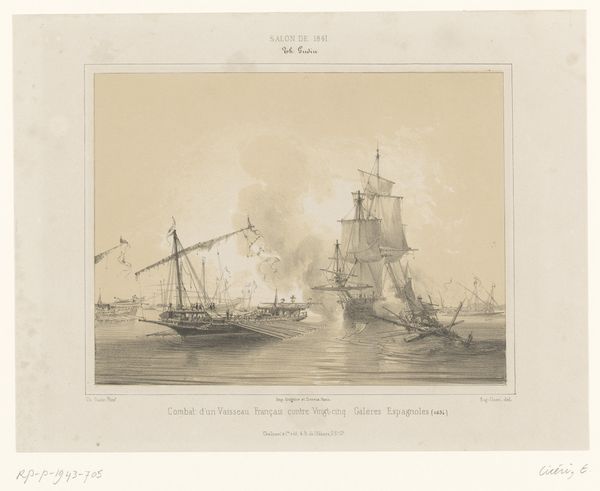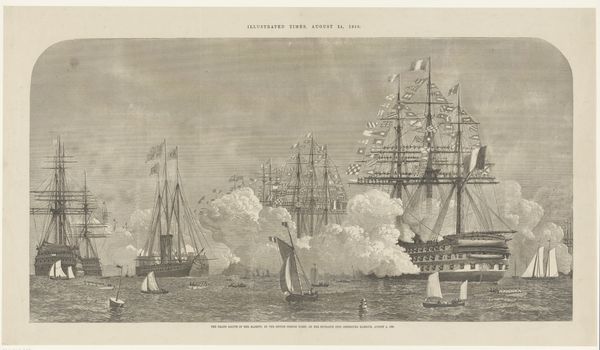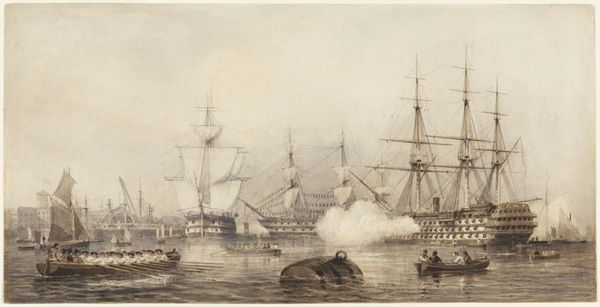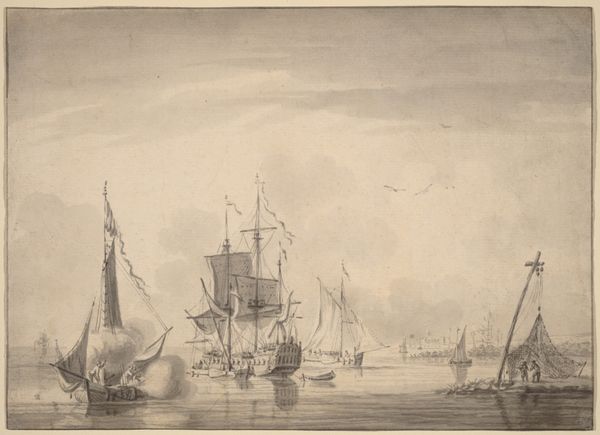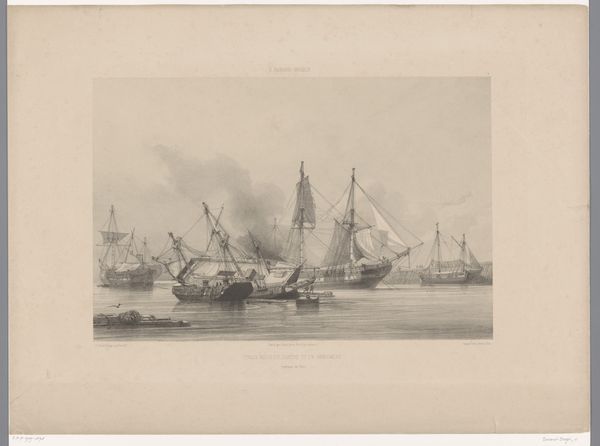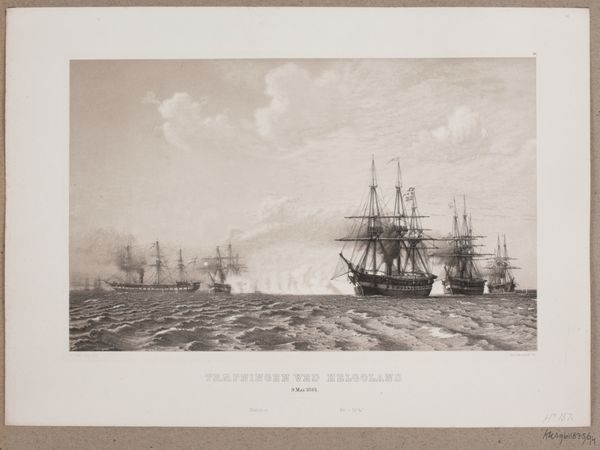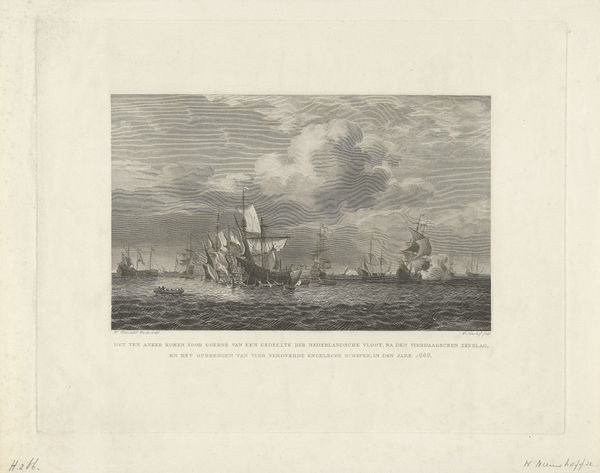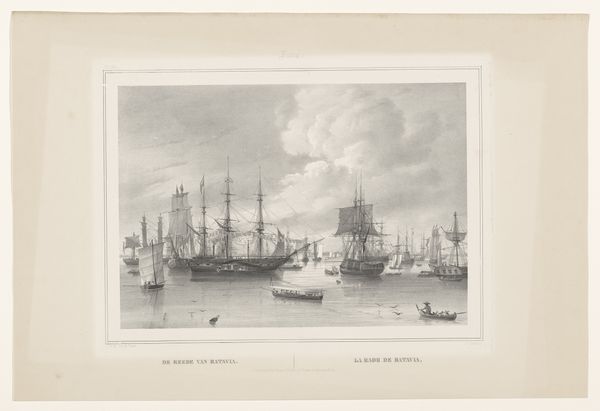
#
vegetal
#
natural shape and form
#
natural tone
#
natural colouring
#
nature colouring
#
curved letter used
#
nature
#
nature heavy
#
watercolour illustration
#
watercolor
Dimensions: height 355 mm, width 518 mm
Copyright: Rijks Museum: Open Domain
Editor: This is "Bombardement van Odessa, 1854", made between 1854 and 1855 by Max Beeger, currently at the Rijksmuseum. It's rendered in watercolour, and its palette feels quite subdued. The image depicts the bombardment of a port, with a fleet of ships and smoke dominating the scene. What stands out to you? Curator: This work, viewed through a historical lens, provides valuable insight into the Crimean War and its impact on public perception. Consider the romanticism often applied to warfare at the time, particularly evident in the detailed rendering of naval vessels. To what extent do you think this imagery served to sanitize or glorify the violence? Editor: That’s a really good point. Looking closer, you see the details of the ships, but the actual destruction feels almost...decorative, rather than devastating. Do you think the choice of watercolour plays a role in softening the blow, so to speak? Curator: Absolutely. Watercolour, with its inherent delicacy, could be seen as a conscious decision to temper the harsh realities of war for public consumption. Furthermore, its presence in a museum like the Rijksmuseum signifies the institutional role in preserving and framing historical narratives. How might exhibiting this artwork contribute to or challenge national identity? Editor: I guess showing it at the Rijksmuseum positions it as a moment of historical significance for the Netherlands. But by depicting an act of war, is it celebrating power, or just documenting a past event? Curator: That is the central question. Examining such art allows us to unravel the complex relationship between art, power, and memory. Do we learn from it, or are we condemned to repeat it, as some historians might suggest? Editor: So, the painting itself is less about the event, and more about how we remember it and what purpose that memory serves. I definitely see that differently now. Thanks for your insight! Curator: My pleasure. And your perspective enriches the reading of this work, shedding light on our responsibilities when interacting with artworks portraying conflicts of the past.
Comments
No comments
Be the first to comment and join the conversation on the ultimate creative platform.
